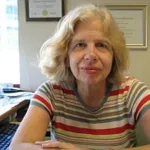(Press-News.org) When they go to the dentist to get a tooth pulled or another procedure, patients might not think that the prescription they receive to ease their pain could put them or their family at risk of an opioid overdose.
But a new study from the University of Michigan shows that overdose rates were two and a half times higher among patients who filled a prescription for an opioid medication after a dental procedure, compared with those who didn't fill such a prescription.
Overdose rates were also higher among the family members of such patients - possibly from misuse of the leftover pills.
The study is published in the American Journal of Preventive Medicine by a team from the U-M Medical School and School of Dentistry. It used data from 8.5 million teen and adult patients who had dental procedures between 2011 and 2018, and whose care was covered by Medicaid or private dental insurance. Nearly 27% of these patients filled a prescription for an opioid such as hydrocodone or oxycodone.
The researchers identified 2,700 overdoses that occurred in the 90 days after a tooth extraction or 119 other dental procedures. That works out to about three overdoses for every 10,000 dental procedures. The rate was 5.8 per 10,000 among those who filled an opioid prescription within three days of their procedure, compared with 2.2 per 10,000 among those who didn't.
The researchers note that other data have shown that in 2016 alone, dentists wrote 11.4 million prescriptions for opioids. The new study's findings suggest that 1,700 overdoses a year could be happening because of dental opioid prescriptions.
Risks among family members
The study also used data from 3.5 million privately insured dental procedure patients to examine overdoses within 90 days in the patients' family members. The rate of overdose was 1.7 per 10,000 procedures in family members of privately insured patients who filled opioid prescriptions, compared with 1 per 10,000 procedures among those who didn't.
In the study, 400 family members of patients were treated for opioid overdoses in the 90-day period after the dental patient's procedure. In all, 42% of these overdoses were in the child of the patient who had a procedure, and another 25% were in a spouse; the rest were in parents and siblings.
Kao-Ping Chua, M.D., Ph.D., led the analysis. "Our paper shows that when patients fill dental opioid prescriptions, the risk of opioid overdose increases both for themselves and their family members," he says. "This underscores the importance of avoiding dental opioid prescribing when non-opioids like ibuprofen and acetaminophen are effective options for pain control, as is the case for the majority of dental procedures. Our finding of increased overdose risk in family members also shows the importance of emphasizing safe storage and disposal when prescribing opioids to dental patients."
Chua is a pediatrician at Michigan Medicine, a health care researcher at the Susan B. Meister Child Health Evaluation Research Center, and a member of the U-M Institute for Healthcare Policy and Innovation.
"To me, this is one of the most powerful truths we've unlocked in our 'big data' research on dental opioid prescribing," says senior author Romesh Nalliah, D.D.S., M.H.C.M. "That when a dentist, like me, prescribes an opioid to a patient I am putting their entire family at risk of overdose. Dentists should consider, if the family concerned was yours, would you take that risk?" Nalliah is associate dean for patient services at U-M School of Dentistry and a member of IHPI, and has led other research on dental opioid use.
The authors are part of the Michigan Opioid Prescribing Engagement Network (Michigan OPEN), which has developed guidelines for dentists and surgeons to reduce or eliminate the prescribing of opioids for many procedures and operations, while still providing effective pain relief. Michigan OPEN recommends that dentists avoid prescribing opioids for most dental procedures because non-opioids are just as effective for pain.
Groups at higher risk of overdose after receiving dental opioids
The study also identifies specific groups of dental patients who are at a higher risk of opioid overdose after receiving opioid prescriptions.
Those groups include patients with diagnosed mental health conditions and substance use disorders, and those with Medicaid health coverage.
This knowledge could help dentists and oral surgeons choose the pain treatment for their patients more carefully, and include a prescription for the overdose treatment naloxone if they prescribe opioids to someone with a higher risk of overdose.
INFORMATION:
The study was funded by the Benter Foundation, the Substance Abuse and Mental Health Services Administration, U-M Precision Health, and the National Institute on Drug Abuse (DA048110). In addition to Chua and Nalliah, the study's authors are Brooke Kenney, M.P.H., and Michigan-OPEN co-directors Jennifer F. Waljee, M.D., M.S., and Chad M. Brummett, M.D., who are also members of IHPI.
The Korea Institute of Civil Engineering and Building Technology (KICT) has announced the development of an effective structural monitoring technique to monitor massive infrastructures, such as long-span bridge. The method provides accurate and precise responses over whole structural system densely by fusing advantages of multi-fidelity data.
Rapid advances in sensing and information technologies have led to condition-based monitoring in civil and mechanical structural systems. The structural monitoring system plays a key role in condition-based monitoring to evaluate structural safety from responses measured by sensors. In other words, following method allows to examine the health of an existing structures, such ...
A ship's container lost overboard in the North Atlantic has resulted in printer cartridges washing up everywhere from the coast of Florida to northern Norway, a new study has shown.
It has also resulted in the items weathering to form microplastics that are contaminated with a range of metals such as titanium, iron and copper.
The spillage is thought to have happened around 1,500 km east of New York, in January 2014, with the first beached cartridges reported along the coastline of the Azores in September the same year.
Since then, around 1,500 more have been reported on social media, with the greatest quantities ...
VANCOUVER, Wash. - Putting on a happy face might not be enough for entrepreneurs to win over potential investors.
Despite perceptions that entrepreneurs should always be positive about their ventures, a study led by a Washington State University researcher found that entrepreneurs whose facial expressions moved through a mix of happiness, anger and fear during funding pitches were more successful.
"Our findings show that there's a role for different emotions in pitches," said Ben Warnick, WSU assistant professor in WSU's Carson College of Business and lead author on the study published in the Journal of Business Venturing. "For example, an angry facial expression can convey how much you care about something, instead of just smiling, which on the extreme end ...
New York nurses caring for COVID-19 patients during the first wave of the pandemic experienced anxiety, depression, and illness--but steps their hospitals took to protect them and support from their coworkers helped buffer against the stressful conditions, according to a study led by researchers at NYU Rory Meyers College of Nursing.
"A critical part of the public health response to the COVID-19 pandemic should be supporting the mental health of our frontline workers. Our study demonstrates that institutional resources--such as supportive staff relationships, professional development, providing temporary housing, ...
Scientists at Tokyo Institute of Technology developed a new strategy for producing a wide range of organotin compounds, which are the building blocks of many organic synthesis methods. Their approach is based on the photoexcitation of stannyl anions, which alters their electronic state and increases their selectivity and reactivity to form useful compounds. This protocol will be helpful for the efficient synthesis of many bioactive products, novel drugs, and functional materials.
Organotin compounds, also known as stannanes, are made of tin (Sn), hydrocarbons, and sometimes other elements like nitrogen and oxygen. During the 1970s, ...
ITHACA, N.Y. - Though more than 131 million Americans have received at least one dose of COVID-19 vaccine to date, public confusion and uncertainty about the importance of second doses and continued public health precautions threaten to delay a U.S. return to normalcy, according to Cornell-led research published April 28 in the New England Journal of Medicine.
In a nationally representative survey of more than 1,000 American adults conducted in February, less than half of respondents said they believed the Moderna and Pfizer-BioNTech vaccines provided strong protection against COVID-19 a week or two after a second dose, consistent with guidance from the U.S. Centers for Diseases ...
NEW YORK, NY-- Diagnosing chronic kidney disease, which is often undetected until it causes irreversible damage, may soon become automated with a new algorithm that interprets data from electronic medical records.
The algorithm, developed by researchers at Columbia University Vagelos College of Physicians and Surgeons, automatically scours a patient's electronic medical record for results of blood and urine tests and, using a mix of established equations and machine learning to process the data, can alert physicians to patients in the earliest stages of chronic kidney disease.
A study of the algorithm was published in the journal npj Digital Medicine in April.
"Identifying ...
These mysterious earthquakes originate between 400 and 700 kilometers below the surface of the Earth and have been recorded with magnitudes up to 8.3 on the Richter scale.
Xanthippi Markenscoff, a distinguished professor in the Department of Mechanical and Aerospace Engineering at the UC San Diego Jacobs School of Engineering, is the person who solved this mystery. Her paper " END ...
In an effort to fight the millions of tons of marine litter floating in the ocean, Florida State University researchers have developed a new virtual tool to track this debris.
Their work, which was published in Frontiers in Marine Science, will help provide answers to help monitor and deal with the problem of marine litter.
Eric Chassignet, director of the Center for Ocean-Atmospheric Prediction Studies and professor in the Department of Earth, Ocean and Atmospheric Science.
"Marine litter is found around the world, and we do not fully understand its ...
Researchers at the University of Bonn and the research center caesar have succeeded in ultra-fast freezing proteins after a precisely defined period of time. They were able to follow structural changes on the microsecond time scale and with sub-nanometer precision. Owing to its high spatial and temporal resolution, the method allows tracking rapid structural changes in enzymes and nucleic acids. The results are published in the Journal of the American Chemical Society.
If you want to know what the spatial structure of a biomolecule looks like, you have a formidable arsenal of tools at your disposal. The most popular ones are electron microscopy and X-ray diffraction, which can reveal even the smallest ...




